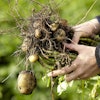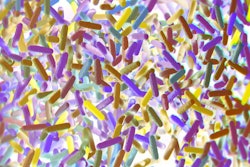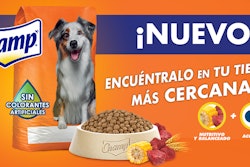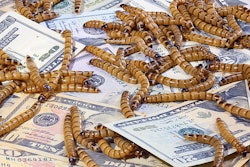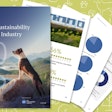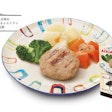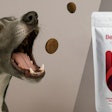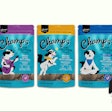
Insect-based pet food ingredients have been growing in popularity for years, backed by sustainability and nutrition trends, while sometimes hindered by regulation. The pandemic reveals another marketable benefit of bug farms.
“The phylogenetic distance between humans and hexapods gives good reasons to think that zoonoses are unlikely, and Ÿnsect’s scientific teams continuously study mealworms and assess potential risks,” Florent Dupriez, project manager, insect health, for France-based insect protein and oil producer Ÿnsect, wrote in an email.
COVID-19 in pets and captive animals
An Asian small-clawed otter at the Atlanta Aquarium joined the list of captive animals susceptible to COVID-19. During the ongoing pandemic, pets were among those animals infected by the SARS-CoV-2 coronavirus. In February 2020, a Pomeranian in Hong Kong became the first recorded positive test in a companion animal. Earlier this year, gorillas were the second primate, after humans, to catch the disease when three apes at the San Diego Zoo Safari Park tested positive. Snow leopards, tigers, pumas and lions have all been infected, as have domestic cats, which may be able to pass the disease to other cats. Mink were gassed by the millions in Denmark after the animals became infected with a variant of the coronavirus.
While the SARS-CoV-2 coronavirus probably originated in an animal, perhaps a bat, humans spreading COVID-19 to captive animals now seems more likely. Animals present little risk of spreading the virus to humans, according to Centers for Disease Control and Prevention officials, who believe there is “no evidence that animals play a significant role in spreading SARS-CoV-2.”
Zoonotic diseases and pet food ingredients
From bats to humans to Pomeranians to otters, all of those animals are mammals. Since prehistory, animals and humans have shared sicknesses, known as zoonotic diseases. Approximately 60% of infections afflicting humans arose in animals, from rabies and the plague to other coronaviruses, including severe acute respiratory syndrome and Middle East respiratory syndrome. Mammals and birds have been the primary disease sources.
Post-pandemic, pet food companies may look for ingredients with reduced zoonotic potential. A team of researchers at Ÿnsect has been working to assess potential risks from mealworm farming operations.
“According to their continuous observations, Tenebrio molitor is a safe option with very few risks, given the genetic distance between mealworms and humans,” wrote Dupriez in an email. “Only domestic or wild vertebrate animals are considered as reservoirs of zoonoses (as defined by the term zoonosis), except for arthropods which are considered as vectors or relays of numerous pathologies. A recent review of the state of knowledge in this field gathers a great number of zoonoses, pathogens, animal reservoirs and modes of transmission known to date. Tenebrionidae (Tenebrio molitor) do not appear in it.
“If you were wondering about coronaviruses specifically, mealworms are not carriers of COVID-19 or even of this family of viruses, which are mostly found in mammals and birds. As an example concerning the SARS-CoV-2 pandemic, studies of researchers from Wageningen University show that insects do not have a receptor capable of binding to SARS-CoV-2, and are therefore not hosts of this virus and preventing the replication of the virus.
“Insects can carry viruses that are dangerous for humans (or farm animals). This is the case of Zika, yellow fever, Dengue or West Nile viruses. These diseases are all transmitted by mosquitoes, and the risk of zoonosis from mealworms remains very low and has thus not been too much studied. You have to go back to 1969 to find two studies describing the presence of viral particles infecting farm animals, a study from the German A. Huger and a study by the French G. Devauehelle and C. Vago. These two studies mention an irradiating virus, from the Iridovirus family, close to the one responsible for densonucleosis in different caterpillars. It was identified again two years later by D. Thomas and J. Gouranton in the midgut of mealworms, then characterized and classified in 1981 by P. Black and his American colleagues as an iridescent virus of type 29. Since these cases about 40 years ago, no other studies have been published on Tenebrio molitor.”
Insect-based pet food ingredients at Petfood Forum
Pet food and treat makers can learn more about insect-based pet food ingredients at Petfood Forum.
Register for Petfood Forum 2021
Petfood Forum brings together pet food professionals from around the world to network, exchange ideas and move business forward with one another and with the industry's leading pet food manufacturers and suppliers.
The in-person and on-demand event delivers the opportunity to learn about pet nutrition and ingredients, global pet food market growth, pet food safety, processing, packaging and more, all from leading, recognized pet food industry experts.


